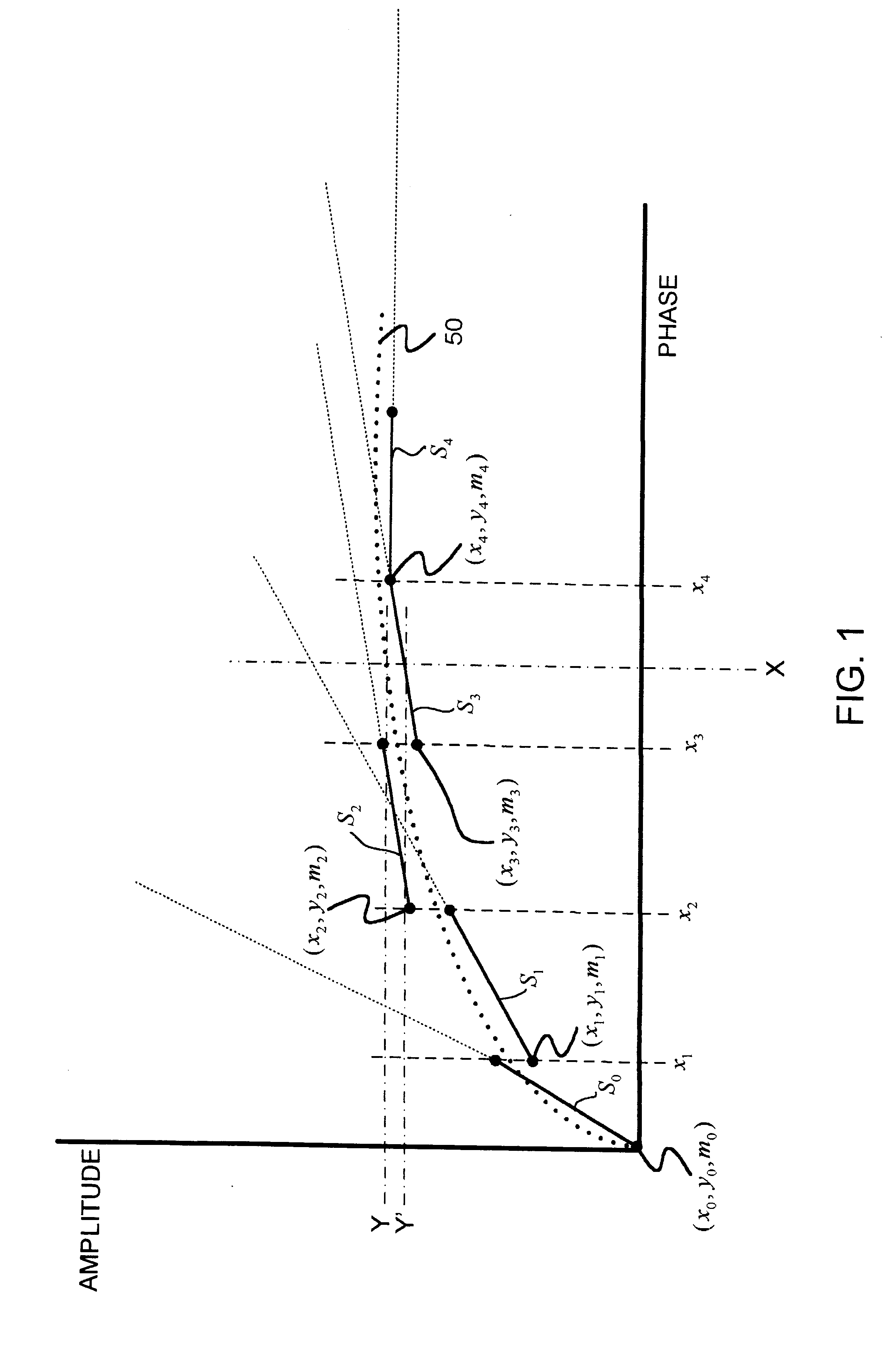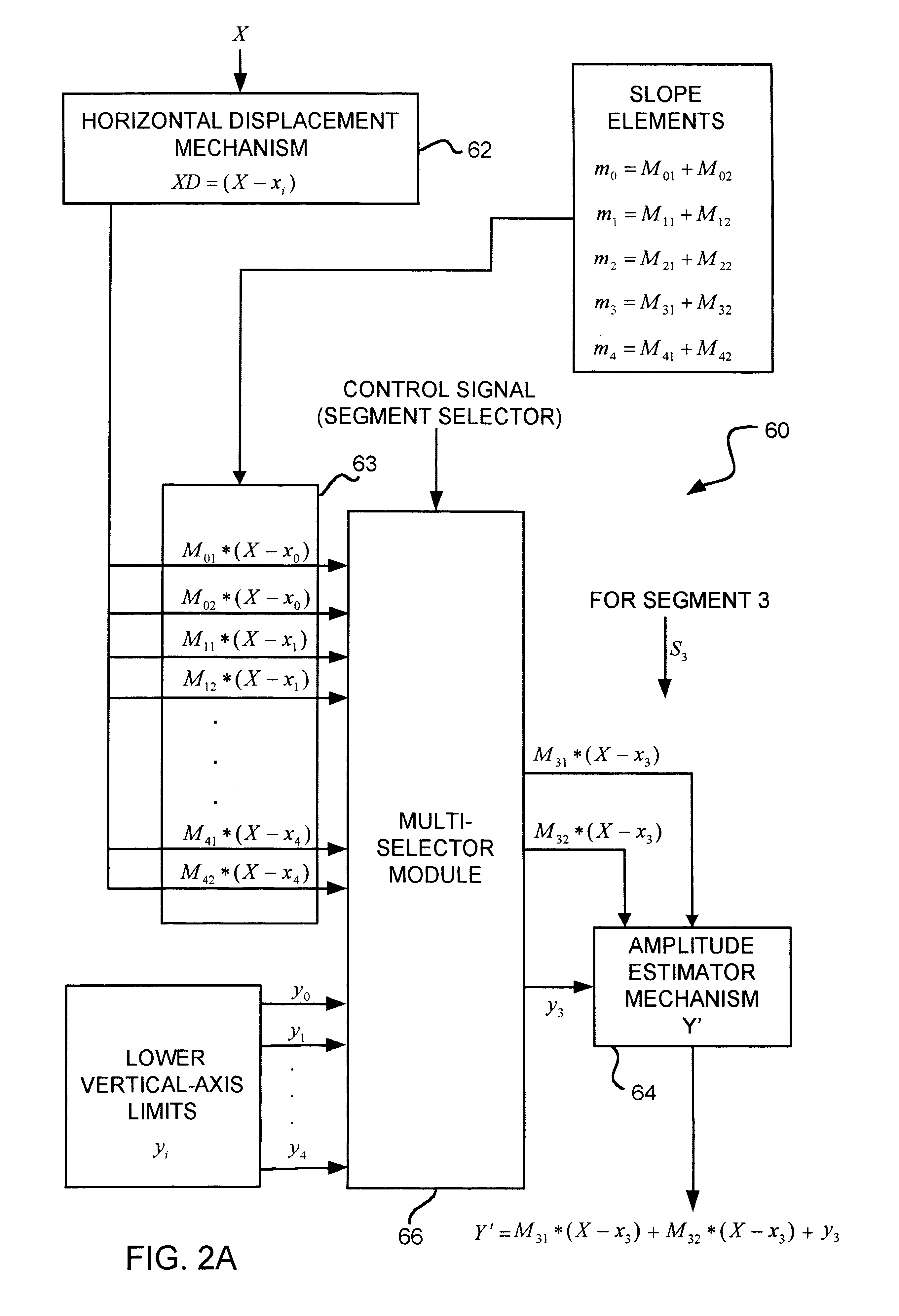Phase to sine amplitude conversion system and method
a phase to sine amplitude and conversion system technology, applied in pulse techniques, instruments, high-level techniques, etc., can solve the problems of large integrated circuit space, high power consumption, and difficulty in mobile wireless communication equipmen
- Summary
- Abstract
- Description
- Claims
- Application Information
AI Technical Summary
Problems solved by technology
Method used
Image
Examples
example 1
FIG. 5 is a schematic representation of a first implementation example of a DDFS 300 including an addend generator / selector module 120A of the PSAC 110 according to the present invention. In example 1, the phase accumulator 112 accumulates a 16-bit input (the FCW from the FCU 114), on every clock cycle and passes through at most 2.sup.16 distinct states before revisiting any such state. The 12 bit output of the phase accumulator 112 is a ramp with a frequency that is equal to a clock frequency of the DDFS 300, divided by 2.sup.16, times the value of the FCW. The 12-bit output therefore takes values in the interval [0, 2.sup.12 -1], or [0, 4095], representing a fraction of a full rotation around a unit circle.
For example, an output of zero from the phase accumulator 112 corresponds to angle zero, an output of 1024 corresponds to angle 1024 / 4096.times.2.times..pi.=.pi. / 2, 2048 corresponds to angle 2048 / 4096.times.2.times..pi.=.pi., and so forth. Phase accumulator output values in the ...
example 2
FIG. 6 is a schematic representation of a second implementation example of a DDFS 400 including an addend generator / selector module 120B of the PSAC 110 according to the present invention. The signal generation component 102 and the addition / signal conditioning component 104 and their respective individual modules all function in the same way as described above. The difference between example 1 (FIG. 5) and example 2 (FIG. 6) resides in the configuration and structure of the addend generator / selector module 120B.
In particular, the four MSBs from the signal generation component 102 are applied to four multiplexers 402, 404, 406, and 408 as the control signal to identify which one of sixteen input lines each multiplexer should select. The multiplexers 402-408 each have 16 input ports, numbered 0 to 15 inclusively.
The port assignments of the multiplexer 402 are:
(a) ports 0 to 9: a signal provided by the 6 LSBs (i.e., the data signal) from the one's complement module 118 of the signal g...
example 3
FIGS. 7A and 7B represent a schematic representation of a third implementation example of a DDFS 500 including an addend generator / selector module 120C of the PSAC 110 according to the present invention to generate a digital representation of two sinusoid waveforms in quadrature. The signal generation component 102 and the addition / signal conditioning component 104 and their respective individual modules all function in the same way as described above. In example 3, the addend selector module is divided into a sine generation module 510 and a cosine generation module 520 described in more detail below.
Referring to FIG. 7B, 12 bits from the phase accumulator 112 are separated into four parts: (1) the most significant bit (MSB1), (2) the second MSB (MSB2), (3) the third MSB (MSB3), and nine least significant bits (LSB9).
The MSB1 represents the sign of the sine output data and is applied to: (a) the DAC / LPF 114A / 116A (identical to the DAC 115 and LPF 116 of FIG. 5 but shown together fo...
PUM
 Login to View More
Login to View More Abstract
Description
Claims
Application Information
 Login to View More
Login to View More - R&D
- Intellectual Property
- Life Sciences
- Materials
- Tech Scout
- Unparalleled Data Quality
- Higher Quality Content
- 60% Fewer Hallucinations
Browse by: Latest US Patents, China's latest patents, Technical Efficacy Thesaurus, Application Domain, Technology Topic, Popular Technical Reports.
© 2025 PatSnap. All rights reserved.Legal|Privacy policy|Modern Slavery Act Transparency Statement|Sitemap|About US| Contact US: help@patsnap.com



